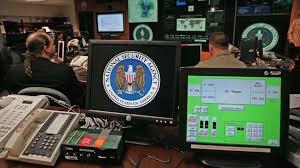Washington, Aug 6: Reports outlining the excesses of the U.S.' surveillance programmes this week noted that the country's terrorist tracking system, called the Terrorist Screening Database, was monitoring 280,000 people, nearly 40 per cent of all those included, despite them being categorised as “no recognised terrorist group affiliation.”
This group was closely tracked by U.S. law enforcement as part of the enormous database of 680,000 people on a watch-list of “known or suspected terrorists,” many suspected of ties to al Qaida, Hamas, and Hezbollah.
To a significant extent the database was built up with “clandestinely acquired foreign government information” – a revelation of concern to countries such as India, which prior reports have indicated were spied upon extensively by the U.S. National Security Agency.
In the case of the TSD the Central Intelligence Agency was said to have used a previously unknown programme code-named “Hydra,” to covertly access databases maintained by foreign countries and extract data to add to the watch-lists.
This data, and another secret database called CIA Information Needs Management, or CINEMA, were harvested by the Directorate of Terrorist Identities, a “virtually unknown U.S. counterterrorism unit responsible for maintaining TIDE,” to facilitate biometric searches for suspects
The documents were published by The Intercept, the investigative media organisation led by Glen Greenwald and founded by billionaire Ebay founder Pierre Omidyar, although unlike prior efforts of Mr. Greenwald they did not say that they had used evidence made available by Edward Snowden, former NSA contractor-turned whistle-blower, for this exposé.
However the Intercept's source, said to be from within the intelligence community, also revealed that the Obama administration “has presided over an unprecedented expansion of the terrorist screening system… [and] boosted the number of people on the no-fly list more than ten-fold, to an all-time high of 47,000.
This surpassed the number of people barred from flying under George W. Bush, the report said, adding that in terms of the terror screening too, approximately 1.5 million names added to the watch-list over the past five years at a rate of 900 records per day.
In terms of the geographic locations of the suspects in the database the report said that the highest concentration of designated persons was in Dearborn, Michigan, which was said to have the “largest percentage of Arab-American residents in the country.”
The expansion of the records held by these agencies appears to have been concomitant with a dramatic increase in the intrusive edge of the databases.
In 2013, the main terrorism database contained more than 860,000 biometric files on 144,000 people, including more than 500,000 facial images, nearly 250,000 fingerprints and 70,000 iris scans.
Further, in a single year, the U.S. was said to have expanded its collection of “non-traditional” biometric data, including “dramatic increases in handwriting samples (32 per cent), signatures (52 per cent), scars, marks, and tattoos (70 per cent), and DNA strands (90 per cent),” the Intercept report noted.





Comments
Add new comment